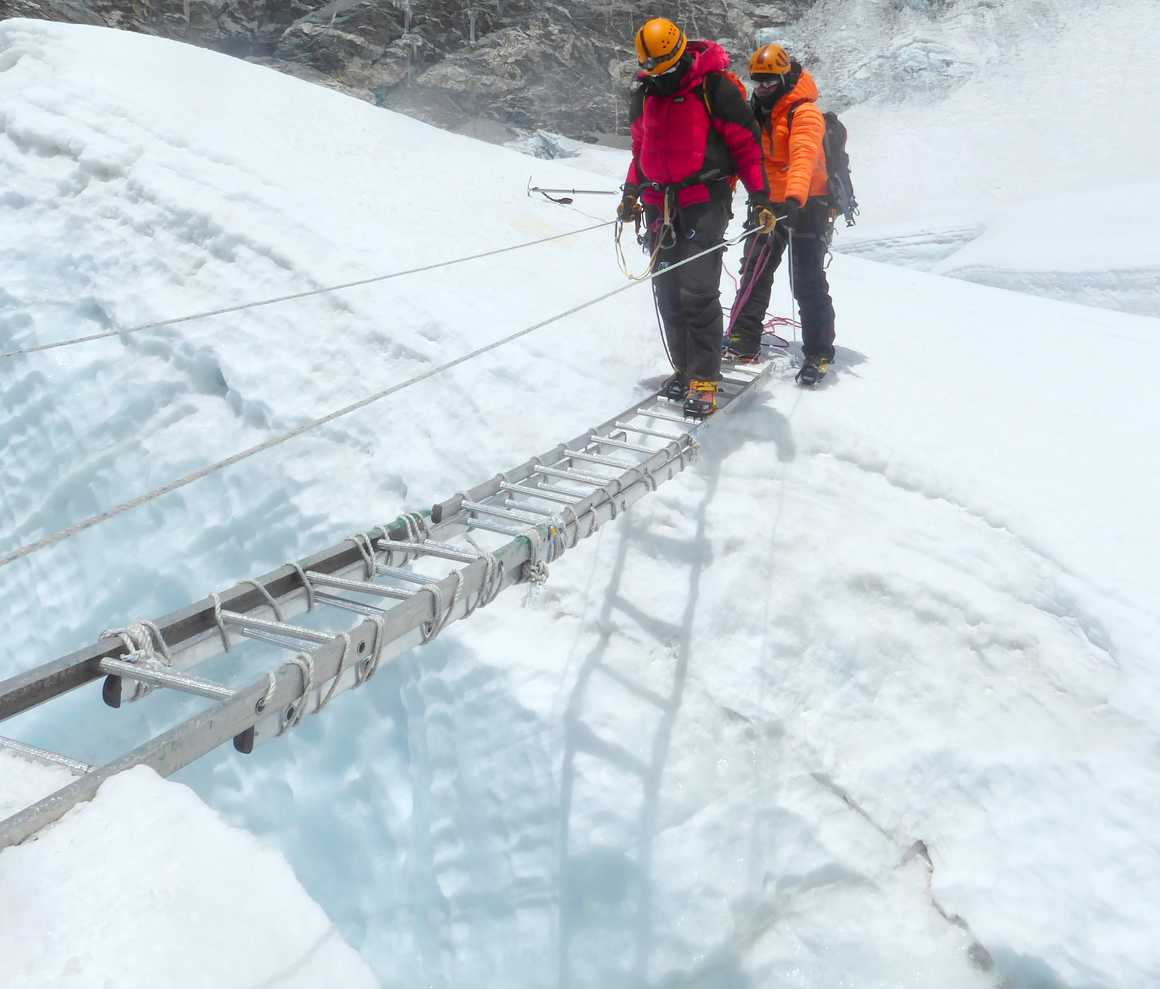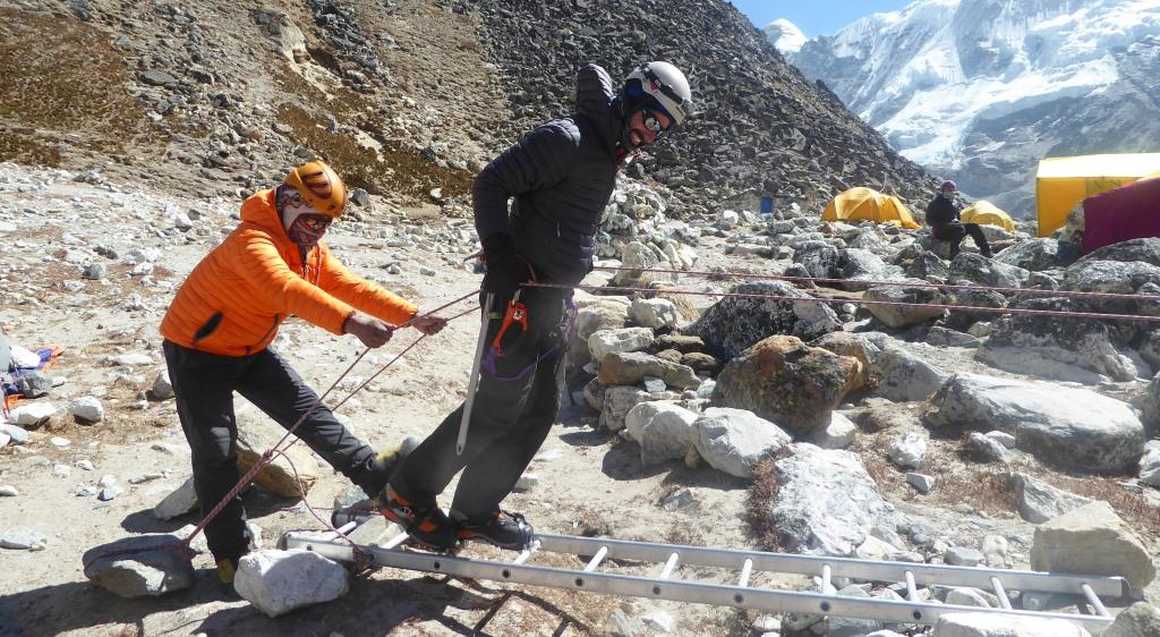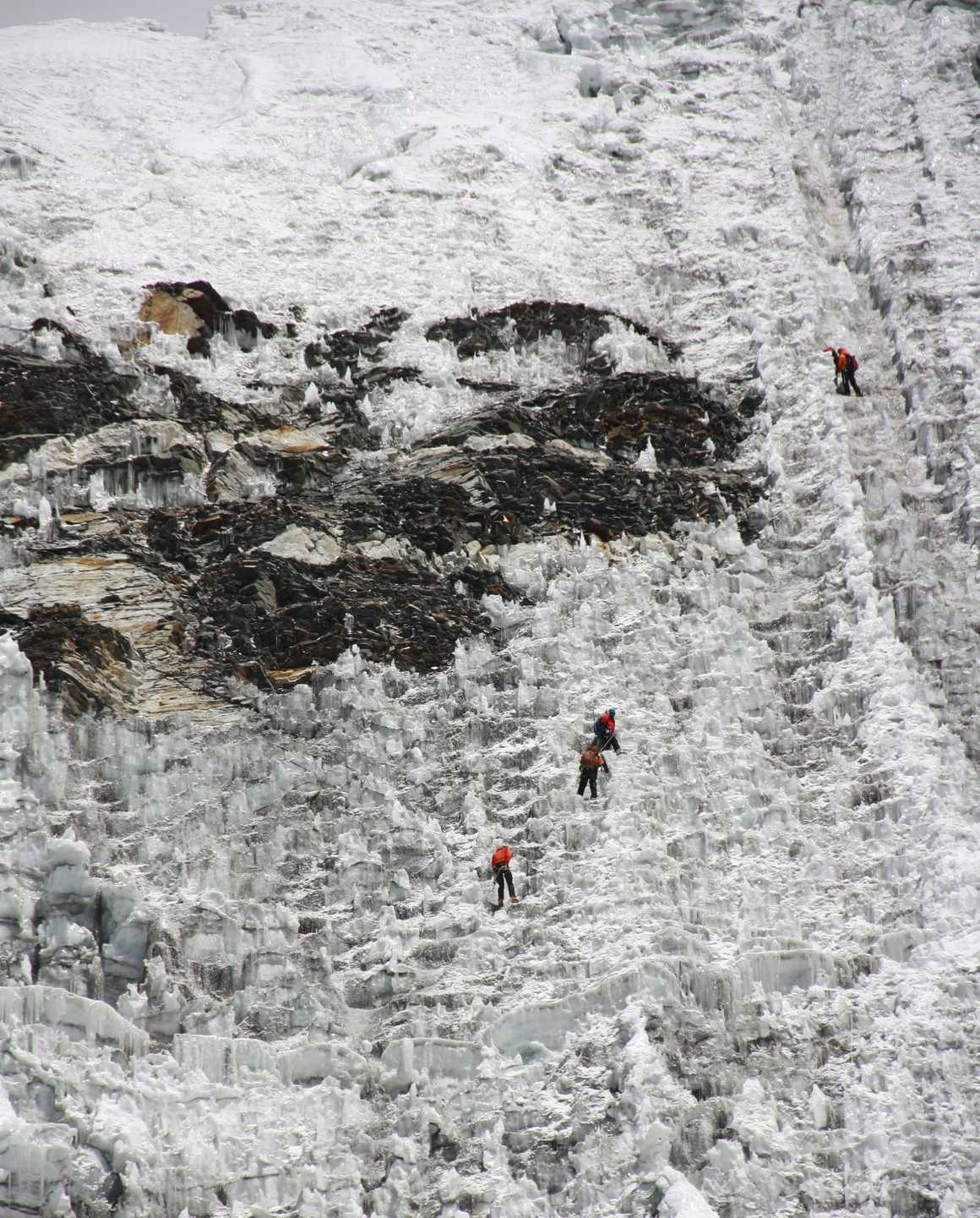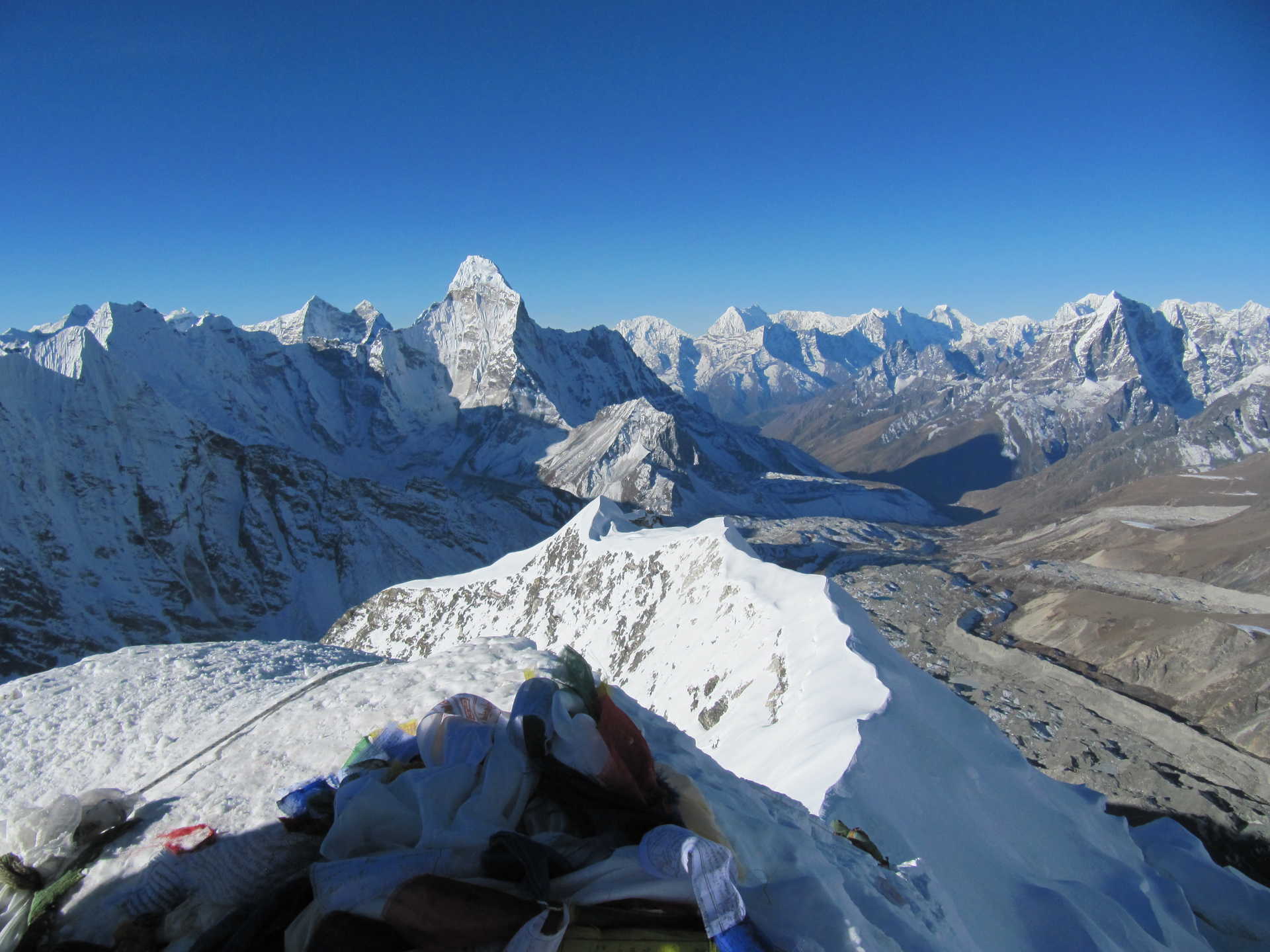About Island Peak
You’ll find Island Peak (aka Imja Tse) in the Himalayan Mountains in Nepal. It’s only a few miles away from Mount Everest and has a maximum elevation of 6,189 metres. (Everest’s is a colossal 8,848 metres, which makes Island Peak kind of a ‘little brother’ really). Everest Base Camp sits at 5,380m so to give you a comparison for context, climbing Island Peak will take you almost a kilometer higher than that. How exciting!

Island Peak: challenging, exhilarating but just how difficult is it?
Yeah, I know what you’re thinking; ‘difficulty’ is a subjective concept. A trek that is one person’s ‘piece of cake’ might be the next person’s ‘Mission: Impossible’. A bit of context and perspective is what’s needed here. So let’s talk about you for a moment. If you’re the kind of bounder for adventure who has stamina and determination, is of good physically fitness and who eats moderately challenging treks for breakfast (along with your Shredded Wheat), Island Peak is likely to be right up your cul-de-sac.
That said, altitude sickness is a great leveller. I know we bang on about it, but altitude sickness is a fact of the high-altitude trekker’s life and it can affect anyone regardless of how fit and experienced they are. You can prepare for it though; responsible Island Peak trek itineraries (such as ours, of course) build in time to help you better acclimatise to the thinner atmosphere and reduced oxygen levels you’ll experience while trekking. There are also various medications you can take to manage the symptoms of altitude sickness. At the end of the day, though, you’ll be trekking at an elevation of up to 6,000 meters; if you start to feel really rough, trying to put a brave face on it and push on could be the worst (and possibly even the last) thing you’ll ever do. Don’t worry though; if things go a bit wobbly for you and you need to head down from the mountains, we’ve got your back.
Altitude sickness considerations aside, the Island Peak climb itself is probably best described as 'physically demanding’. In our opinion, you probably wouldn’t want to do it as your first-ever high-altitude trekking experience. Not because you wouldn’t be safe – trek safety is our number one consideration – but rather because you might find slightly less technical treks more enjoyable and rewarding while you’re building up experience. That said, there are exceptions to every rule and Island Peak could be achieved as a first time trek as long as you’re suitably fit and healthy, have the necessary grit and pluck and can cope with the aforementioned effects of altitude.

Is Island Peak Dangerous?
Errr… well, snow; ice; mountains; more snow… Oh – I see what you’re getting at. You mean ‘which features of the trek am I likely to find challenging and will therefore inform my assessment of how difficult/dangerous or not I think Island Peak is’? I think that’s what you mean anyway; I lost the will to live about halfway through that last sentence. But I digress.
The first part of the trek follows the classic route to the legendary Everest Base Camp (EBC). In brief, a relatively straightforward downhill start is followed by a steep climb as you criss-cross a river valley, then continuing with drops and ascents over the following days – all the while surrounded by utterly gobsmackingly awesome Himalayan scenery, of course – until you eventually arrive at EBC itself. So far, so Nepalese-high-altitude-trekky. It’s tough, make no mistake, but doable. From EBC the trek takes you down the Dudh Kohsi valley to the Sherpa village of Dingboche then heads up the Imja Khola valley towards the very welcome tea house stop of Chukkung and finally to the base camp for the ascent of Island Peak itself.

The technical part
Things get a little trickier/more fun now (depending on your point of view) as you're faced with an increasingly steep ascent, some rock scrambles and a bloomin’ great glacier to negotiate. Here’s where the crevasses are, they – and your newly-acquired basic climbing skills – start to come into play. The ascent of Island Peak gets properly exciting from hereon in. You see, there are some pretty impressive crevasses in the glacier you now face, and they can only be crossed by using ladders which serve as bridges. Even though you’ll have practiced ladder crossings, and even though you know it’s safe, you’ll still need nerves of steel, a heart of gold and a knob of butter (OK, maybe not the last one) to impel you over these icy fissures.

Once you’ve surmounted the headwall, feel free to collapse in a relieved heap. You’ve conquered a genuine Himalayan peak and will be rewarded not only with a profound sense of personal pride and achievement but also with breath-taking views that not so many other people will ever see.










